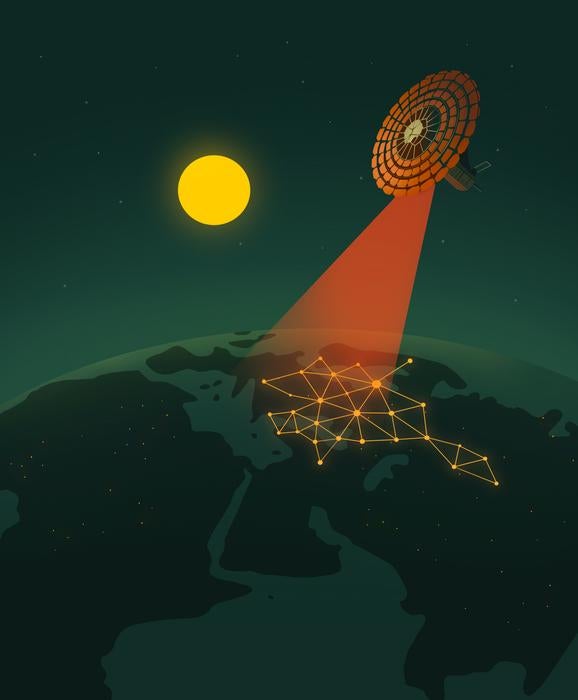Solar panels positioned in space could be harnessed to continuously supply up to 80 per cent of Europe’s renewable energy by 2050, a new study says.
Researchers from King’s College London estimate that within decades, space-based solar power could cut the total costs of Europe’s grid by 7 to 15 per cent.
However, they say achieving this milestone depends upon the rapid development of two Nasa-designed technologies to meet Europe’s goal to achieve net-zero by 2050.
The idea of putting solar panels in space was first proposed in the late 1960s, but the concept has been unfeasible – until now.
Many countries including China, India, Japan, Russia, the US, and the UK are actively pursuing the development and deployment of such satellites to harness the energy of the Sun continuously.
“In space, you potentially have the ability to position solar panels to always face the sun, which means power generation can be nearly continuous compared to the daily pattern on Earth,” says engineer Wei He of King’s College London.
“And, because it’s in space, the solar radiation is higher than on the Earth’s surface,” Dr He explained.

Space solar panels would work similarly to communications satellites, rotating around the Earth to optimally catch the Sun’s energy, which would then be beamed to Earth-based stations in the form of microwaves.
The received energy could then be converted to electricity and fed into the existing grid infrastructure, scientists say.
In the latest study, published in the journal Joule, researchers assessed whether space-based solar power could aid Europe’s net-zero goal using models of Europe’s energy grid in 2050.
They first estimated the annual costs and energy-harvesting potential for two space-based solar power designs from Nasa – the Innovative Heliostat Swarm and the Mature Planar Array.
Nasa’s heliostat design is in the early stages of development, but has higher potential to continuously capture solar energy, researchers say.
The simpler planar array, on the other hand, is closer to being technologically ready but can only capture solar energy around 60 per cent of the time.
However, this is still a big step up from the 15-30 per cent efficiency of standard Earth-based solar panels.
“This is the first paper to put space-based solar power into the energy system transition framework,” Dr He said.
“We’re currently at a stage to transfer this blue-sky idea into testing at a large scale, and to begin discussing regulation and policymaking,” he said.
Scientists compared different scenarios with and without space-based solar power to test whether the technology could complement or outcompete other sources of renewable energy in Europe.
They found that the heliostat design could outperform wind and solar power by 2050, with the performance and costs projected by Nasa.
It could reduce total system costs by 7 per cent to 15 per cent, offset up to 80 per cent of wind and solar, and reduce battery usage by over 70 per cent, though hydrogen storage would still be vital in the winter months for some regions, scientists noted.
“We recommend a coordinated development strategy that combines and leverages both technologies to achieve better performance,” Dr He says.
“By first focusing on the more mature planar design, we can demonstrate and refine space-based solar power technologies while concurrently accelerating R&D for designs with more continuous power generation,” he added.
However, researchers say many more technological breakthroughs are needed before space-based solar power can be widely implemented.


